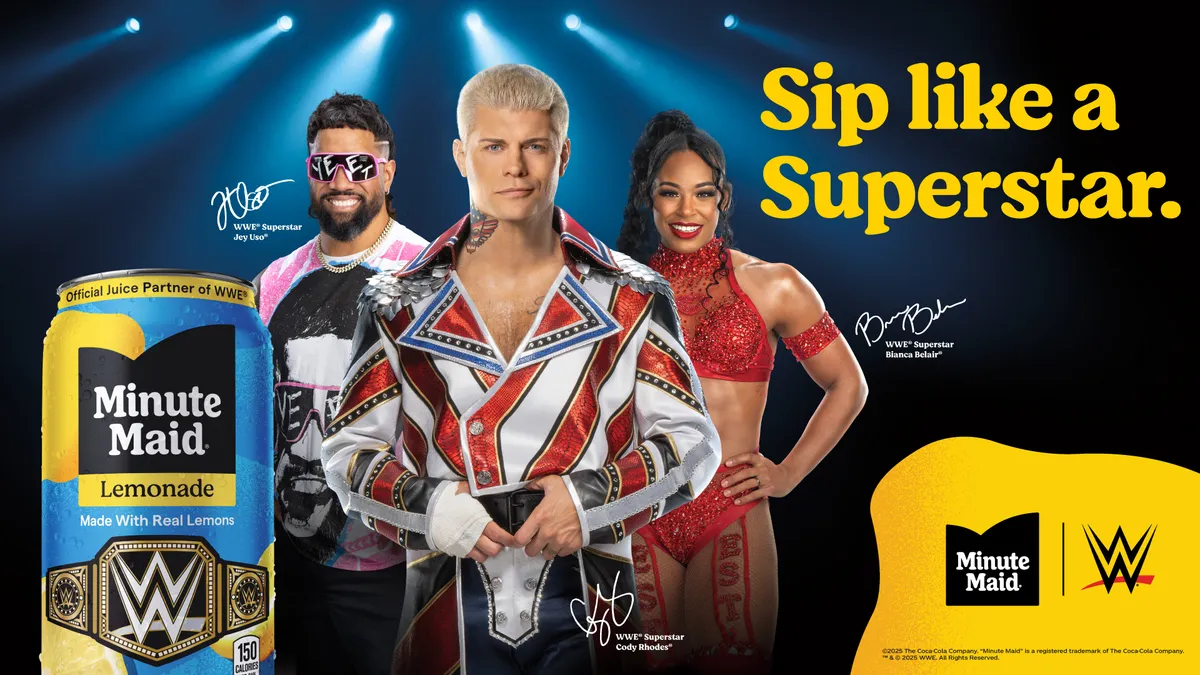Looking back at a year’s worth of marketing stories, five stories really stand out.
Whether it was something new on the marketing scene or trends that will continue to have a major impact into the new year, these stories caused the industry to pause — for good or for ill.
From social media companies making a splash to massive marketing technology advances, here's a recap of some of the biggest stories from 2015.
1. Facebook focused on video
From how much video is shown to users on their timelines via algorithm changes to new video formats available to marketers, in 2015, Facebook went big with video.
Last summer, the world's largest social network rolled out a "floating video" feature that allowed users to watch videos while scrolling through the rest of their timelines. Facebook seemingly set a trend with its floating videos because later in the year several publishers came out with their own "sticky videos" as a way to address viewability issues. Similar to how Facebook's floating videos remain visible while a user scrolls down the page, with sticky videos, video players are "pinned" to the screen so the ad remains viewable. Publishers using the tactic include the Washington Post, CNN and Daily Mail.
Separately, the Menlo Park, Calif.-based tech giant also gave content creators new tools for customizing distribution of video content. Some of the expanded controls included the ability to prohibit embedding on third-party sites, excluding videos from news feeds and only publishing them on specific Page tabs, as well as set expiration dates for videos while retaining performance metrics.
And Facebook’s emphasis on video might already be paying off. According to research from Quintly, native Facebook videos have four times the interaction of videos posted to YouTube, Vimeo, Twitch, Vevo and Red Bull. The study found that Facebook had higher interaction for paid video campaigns as well.
During an earnings call with investors, CEO Mark Zuckerberg said he has a "pretty clear roadmap" for how the company plans to push video growth in the coming years. Facebook now counts 1.5 billion monthly active users and 8 billion daily video views. According to Zuckerberg, the goal is to help users discover video more easily.
Last year was "the year when social media advertising really took off. It made the transition from being a loosely defined 'brand' play to a serious channel with good targeting capabilities that could meet core marketing objectives," Sastry Rachakonda, iQuanti CEO, told Marketing Dive in December. "In 2016, Facebook will lead the pack."
2. What to do about ad blocking tech
Several reports in the last six months alone point to the very real rise of ad blocking software as a tool for consumers to stifle unwanted ads, and a weapon publishers and marketers are having to wake up to.
A controversial study from Adobe and PageFair found that by the middle of the year ad blocking software cost almost $22 billion in lost revenue. Even if the exact amount isn’t certain, ad blocking tech became even bigger news with the release of Apple’s iOS 9 and its new capability for ad blocking in the mobile Safari browser.
Ad blocking tech impacts marketers who are trying to get their messaging out and ad tech firms who are trying to serve ads, but it really hits the bottom line for publishers who aren’t able to serve, or get paid for, ads on their websites.
In what could be a worrying trend, it seems the more ad blocking software gets media attention, the more traction it gains in usage. In a six-month period last year, according to AdBlock Plus, its U.S. user base grew 44% between, reaching more than 13 million users. The topic even found its way into pop culture with references on TV show "South Park" and morning talk shows such as NBC’s "Today" show.
Ad blocking is such a mounting scare that the Interactive Advertising Bureau (IAB) even introduced LEAN ads standards, which call for light, encrypted, ad choice friendly and non-intrusive ads. PaperG CEO Victor Wong recently told Marketing Dive this move spells the end for rich media. "Publishers who had been the large proponents of rich media are now suffering from ad blocking and will turn to simpler, more targeted ads ads to fill the ad inventory," Wong said.
What's more, the IAB has put the industry on notice, calling for them to put the consumer experience ahead of revenue. In the year ahead, this story will continue to serve as a conversation starter, and one that Marketing Dive will continue to monitor.
3. How programmatic leveled the ad buying field
"With more publishers, networks, and exchanges getting into the space and gaining access to the same data, there has been a democratization of programmatic buying," Blue State Digital Deputy Director of Media Chris Choi told Marketing Dive at the end of last year.
Programmatic ad buying is indeed a strong marketing tactic. It accounted for 20% of overall ad revenues in 2014, according to IAB. Research from Dun & Bradstreet found 54% of B2B marketers reported buying programmatic ads. A healthy 65% said they intend to increase the programmatic budget in 2016.
"A programmatic marketing strategy empowers ad teams to better focus their efforts and engage with their creativity," Ryan Bowermaster, vp of product for Blab, explained to Marketing Dive regarding the value of programmatic ad buying. "The duties of those small armies many agencies employ to sift through data can be relegated to automation."
Bowermaster explained that the benefits are twofold -- first, what agencies would normally charge customers for time and resources could be solved by a technical system. And second, agencies can better judge a campaign' efficiency by demonstrating how, when and where "branding costs are being allocated."
Going forward, Blue State Digital's Choi says brands and publishers will have to really work on differentiating their offerings. "The next wave in programmatic will be about the quality of the data and whether data can help advertisers solve complex and unique challenges to measuring success, like connecting online advertising with offline action," Choi said.
4. Snapchat turned into a commanding social media ad player
Social media overall has become an advertising force, largely because of the popularity of mobile video. And even though Snapchat is something of a niche player in social media, it’s making serious advertising waves.
Its Discover platform has given a selected group of publishers access to Snapchat’s millennial-heavy audience, as well as giving marketers an easy way to engage that demographic. And in a sign that Snapchat has fully arrived as a marketing outpost, brands and publishers are hiring Snapchat experts to help them navigate its somewhat quirky interface.
Last fall, Twentieth Century Fox took to Snapchat to promote "The Peanuts Movie" with the first sponsored lens on the social media platform. Apple’s Beats shortly after became the first consumer brand to run a sponsored lens campaign.
Snapchat, notorious for making marketers play by its ad rules, has made some concessions recently, for example, finally allowing publishers to link to content outside of the app. It also introduced a limited targeted ability around Discover content, "audience bundles." And at six billion video views daily, Snapchat is inching closer to Facebook's eight billion.
With live streaming and live events gaining traction as a more intimate and direct form of advertising, the messaging app may also be able to make gains through its Live Stories.
"People have a much greater desire for community, in the moment, shared experiences," PM Digital CEO Chris Paradysz explained to Marketing Dive in December.
5. Reviewageddon buffeted the agency world
It’s not likely to happen again in 2016, but the multi-billion dollar "reviewageddon" that swept the advertising world left its stamp on the dynamic between brands and agencies. And the business model as it stands has been put on notice.
At the Association of National Advertisers’ Masters of Marketing conference in Orlando, PepsiCo President of the Global Beverage Group Bradley Jakeman told the audience, "The agency model is not going to bend, it’s going to break."
Jakeman pointed out the content model is changing out from under agencies, which he said, "will continue to see more and more projects leaving them. They will get a smaller and smaller share of the pie."
What was reviewageddon? Here’s what Marketing Dive reported in July:
“In an unprecedented industry development, many large brands are reviewing their relationships with their large advertising agency partners at the same time, represented what has been estimated as $26 billion in ad spending. According to a Morgan Stanley report from last month, this amount exceeds the total amount of accounts reviewed over the past three years combined.”
And it even impacted Wall Street with publicly traded ad agency holding firms taking a hit on their stock price. Publicis Groupe CEO Maurice Levy blamed the reviews on brands looking to slash costs both in fees paid to agencies and also to pay less for media buys. Levy stressed that marketers "want the price of media to go down."
In the end, the reviews left their mark, and at least one agency came out on top. While BBDO lost the Bud Light account, it gained Subway, Toys-R-Us, Priceline, Baccardi and number of other prominent brands. BBDO also was named Adweek's Agency of the Year.
"The big shift now is that we are moving from buying a demo(graphic) in which we hope to find an audience to buying an audience that we build up one individual at a time," Andrew Robertson, BBDO Worldwide president and CEO, told Bloomberg, describing the recent major changes in marketing.
Meanwhile, BBDO Global Creative Chief David Lubars told Adweek the agency world is changing and BBDO’s philosophy is, "Good, fast and cheap."






















